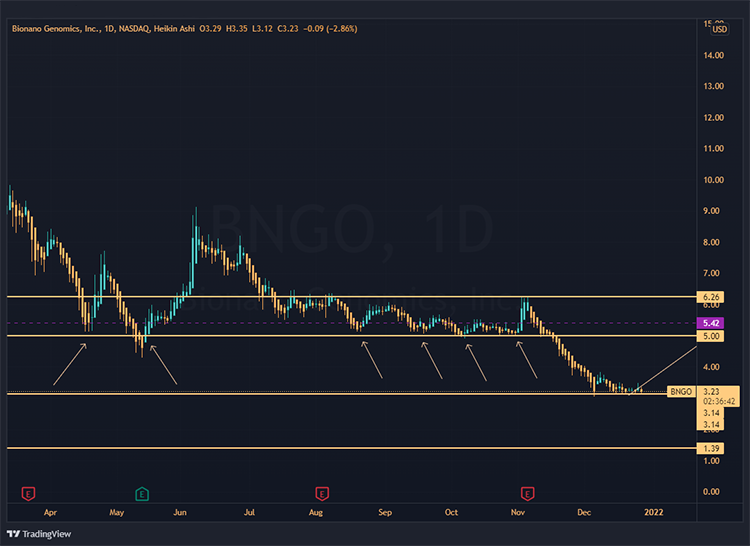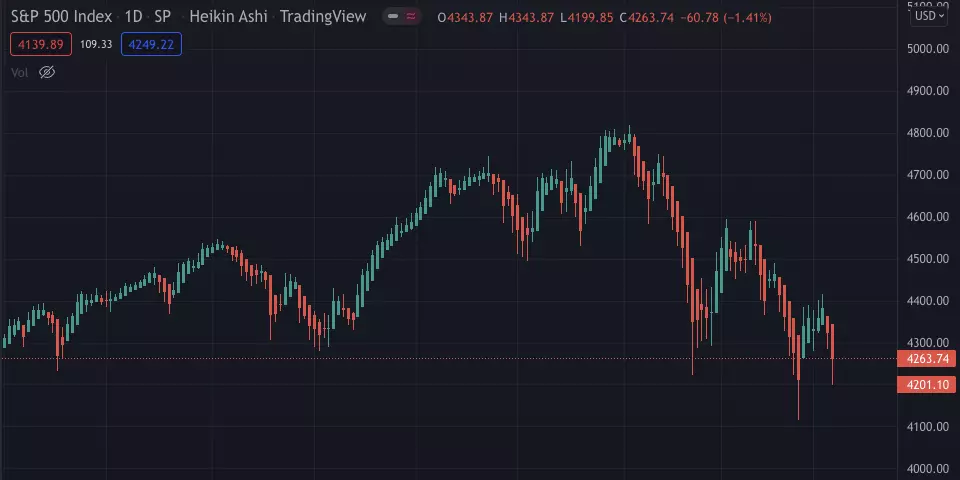When selling options, getting in the money close to expiration means the assignment is coming. This usually means trouble if you don't want to be assigned and be forced to buy the underlying at a higher price if you are selling puts or lose the shares at a lower price if you are selling calls. One good rule of thumb is to never sell puts if you are not happy owning the shares at that specific price.
Risk Disclaimer: Options trading involves considerable risk and is unsuitable for all investors. There is a high risk of losing the entire investment within a relatively short period of time. Please make sure you are willing to take this risk before deciding to trade options.Let's say that day has come when you are one week away from expiration and price tanked, sending your sold put option deep in the money. Assuming you don't mind owning the shares, there's no reason to panic as you will either buy the shares at a much better price or the stock price bounces, and the option expires worthless, leaving you with the premium.
What if I tell you there's a better way...
Rolling Options
Rolling an option means closing an existing option contract and opening a new contract of the same category (call or put) simultaneously.
The new option can be rolled in four ways:
- Rolled out - by moving the expiration date further out in the future.
- Rolled up - by choosing a higher strike price
- Rolled down - by selecting a lower strike price
- Combination of both - by choosing different expiration date and strike price
An option rollout is often preferred around expiration to avoid assignment on "in the money" options, to continue generating income, or to adjust an existing position if you think the circumstances have changed for the underlying stock.
The Rolling Strategy
I sell options almost every month for "passive" income. I especially love selling options when stock prices are suddenly dropping as this usually means the volatility is high, and when volatility is high, premiums are very attractive. When a stock crashes, buyers rush to buy puts, and options premiums skyrocket.
As an option seller, that's a dream come true, but we cannot time the market as we all know. It's not uncommon to get into situations in which you already have a sold put, and the share price drops way below your strike price to the point it cannot recover, usually right after earnings.
When this happens, you can't even write calls against your assigned shares to make some money back, leaving you 'bag holding' the shares and waiting for the price to go up.
As I have already spoiled the solution for you, one way to avoid this and mitigate your potential losses is to roll your option before you get assigned.
How to roll an option
- Find the option you sold and buy to close it.
- Go further out in expiration, say another month, and look for an option at the same strike (possibly even better)
This action should give you some credit back but don't think about this as a premium move. Think about this as an improvement over time.
The main goal is to release as much capital as possible by lowering the strike price, essentially coming closer to where the stock price dropped. If we can get a little premium in the process, that's an added bonus.
Rolling example
To give you an example, I have been selling puts on BNGO stock since May this year. If you look at the price, it found support at $5 and bounced back up every single time it reached that level making it an ideal setup for selling puts at that strike price.

I made a profit almost every month using this support line, yielding around 5-8% premiums every trade. However, this run soon came to an end in early November when the stock price tanked a week after earnings... who would have thought, right?
When the selloff happened, I had sold two BNGO Put contracts at a $5 strike price expiring on 17 Dec. One week before expiration, the stock price was trading at around $3.23, which means I was at a $177 capital loss per contract.
My options were deep in the money close to expiration, making them very unlikely to recover, so I decided to roll them as I didn't want to hold the shares until the price would go back up.
- In November, I sold two BNGO Put contracts at $5 strike with a 17 Dec expiration and got $43 in premium for each contract.
- On 9 Dec, I have decided to close those options and roll them further out ( If the prices allow, the main idea is to also lower your strike price ). The price for closing these options was $143 per contract. This meant I had to take a loss of $100 per contract.
- The best put option I could sell was one expiring a month and a half later on 21 Jan 2022, at the same $5 strike price. I have sold this option for $157 per contract giving me a profit of $57 ( $157 - $100 ) per contract. Which is around $14 higher than my initial premium.
What this meant was that I was able to delay my option assignment for an extra month while I keep my initial premium (and possibly a little bit extra).
There's one secret here. Be on the lookout when the stock price recovers. When the price goes higher, the option cost will go lower, meaning you can buy to close the current option for cheaper, letting you reduce the strike price, thus releasing some of the capital collateral.
You can do this process repeatedly until you release most of your collateral and remain in profit. However, if the stock price continues to go against you, it may not be worth it to roll them further out. In that case, you won't be able to avoid assignments anymore, but you'd be in a much better spot.
Bottom line
Knowing how to roll options, you can use the time to your advantage and turn a complete disaster into a net profit. Time and volatility are the option seller's most powerful weapons, and you should learn how to use them to your advantage.
Don't panic just because the price tanked hard, be patient, assess the situation, and seize every opportunity to reduce your collateral exposure. You'll be surprised how soon you'll see the tide turning in your favor.





